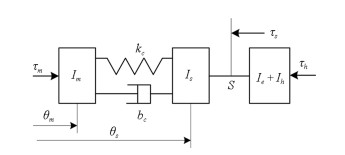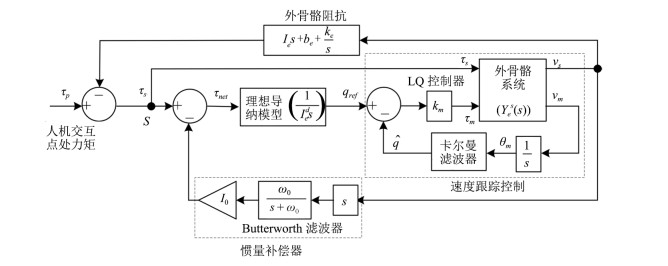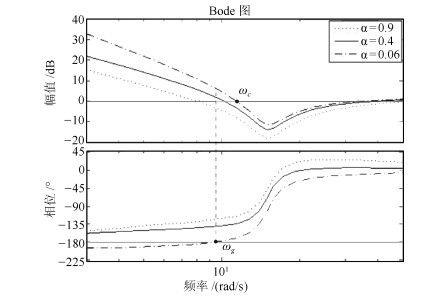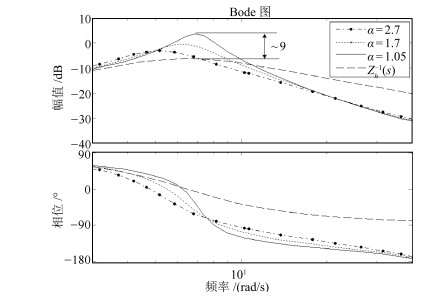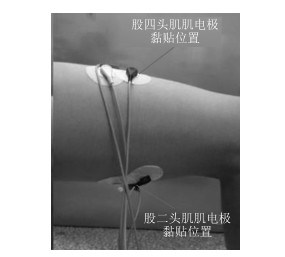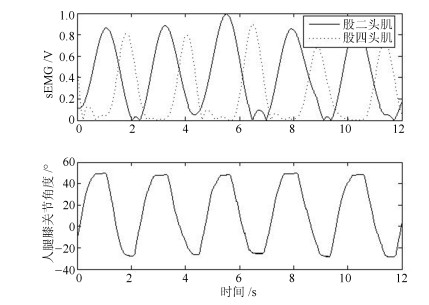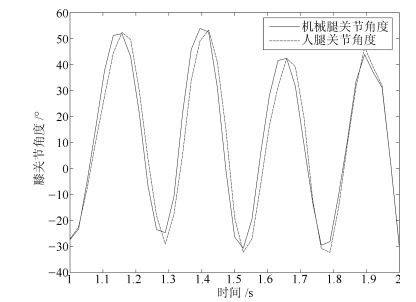|
[1]
|
Yan T F, Cempini M, Oddo C M O, Vitiello N V. Review of assistive strategies in powered lower-limb orthoses and exoskeletons. Robotics and Autonomous Systems, 2014, 64:120-136 http://www.docin.com/p-1048805869.html
|
|
[2]
|
Robert B. Exoskeletons and robotic prosthetics:a review of recent developments. Industrial Robot:An International Journal, 2009, 36(5):421-427 doi: 10.1108/01439910910980141
|
|
[3]
|
胡进, 侯增广, 陈翼雄, 张峰, 王卫群.下肢康复机器人及其交互控制方法.自动化学报, 2014, 40(11):2377-2390 http://www.aas.net.cn/CN/abstract/abstract18514.shtmlHu Jin, Hou Zeng-Guang, Chen Yi-Xiong, Zhang Feng, Wang Wei-Qun. Lower limb rehabilitation robots and interactive control methods. Acta Automatica Sinica, 2014, 40(11):2377-2390 http://www.aas.net.cn/CN/abstract/abstract18514.shtml
|
|
[4]
|
Rene J F, Verlinden O. Review of control algorithms for robotic ankle systems in lower-limb orthoses, prostheses, and exoskeletons. Medical Engineering & Physics, 2011, 34(4):397-408 https://www.researchgate.net/publication/51896474_Review_of_control_algorithms_for_robotic_ankle_systems_in_lower-limb_orthoses_prostheses_and_exoskeletons
|
|
[5]
|
杨巍, 张秀峰, 杨灿军, 吴海杰.基于人机5杆模型的下肢外骨骼系统设计.浙江大学学报(工学版), 2014, 48(3):430-435, 444 http://www.cnki.com.cn/Article/CJFDTOTAL-ZDZC201403009.htmYang Wei, Zhang Xiu-Feng, Yang Can-Jun, Wu Hai-Jie. Design of a lower extremity exoskeleton based on 5-bar human machine model. Journal of Zhejiang University (Engineering Science), 2014, 48(3):430-435, 444 http://www.cnki.com.cn/Article/CJFDTOTAL-ZDZC201403009.htm
|
|
[6]
|
孙建, 余永, 葛运建, 陈峰, 沈煌焕.基于接触力信息的可穿戴型下肢助力机器人传感系统研究.中国科学技术大学学报, 2008, 38(12):1432-1438 http://www.cnki.com.cn/Article/CJFDTOTAL-ZKJD200812013.htmSun Jian, Yu Yong, Ge Yun-Jian, Chen Feng, Shen Huang-Huan. Research on multi-sensors perceptual system of wearable power assist leg based on interaction force signal and joint angle signal. Journal of University of Science and Technology of China, 2008, 38(12):1432-1438 http://www.cnki.com.cn/Article/CJFDTOTAL-ZKJD200812013.htm
|
|
[7]
|
向馗, 易畅, 尹凯阳, 葛运建.一种踝关节行走助力外骨骼的设计.华中科技大学学报(自然科学版), 2015, 43(S1):367-371 http://www.cnki.com.cn/Article/CJFDTOTAL-HZLG2015S1087.htmXiang Kui, Yi Chang, Yin Kai-Yang, Ge Yun-Jian. An ankle exoskeleton for walking assist. Journal of Huazhong University of Science and Technology (Natural Science Edition), 2015, 43(S1):367-371 http://www.cnki.com.cn/Article/CJFDTOTAL-HZLG2015S1087.htm
|
|
[8]
|
韩亚丽, 祁兵, 于建铭, 宋爱国, 朱松青.面向助力膝关节外骨骼的弹性驱动器研制及实验研究.机器人, 2014, 36(6):668-675 http://www.cnki.com.cn/Article/CJFDTOTAL-JQRR201406005.htmHan Ya-Li, Qi Bing, Yu Jian-Ming, Song Ai-Guo, Zhu Song-Qing. Development and experimental study of elastic actuator for a power-assisted knee exoskeleton. Robot, 2014, 36(6):668-675 http://www.cnki.com.cn/Article/CJFDTOTAL-JQRR201406005.htm
|
|
[9]
|
张立勋, 李长胜, 刘富强.多模式下肢康复训练机器人的设计与实验分析.中国康复医学杂志, 2011, 26(5):464-466 http://www.cnki.com.cn/Article/CJFDTOTAL-ZGKF201105021.htmZhang Li-Xun, Li Chang-Sheng, Liu Fu-Qiang. Design and experimental analysis of the multi-mode lower limb rehabilitation robot. Chinese Journal of Rehabilitation Medicine, 2011, 26(5):464-466 http://www.cnki.com.cn/Article/CJFDTOTAL-ZGKF201105021.htm
|
|
[10]
|
Kazerooni H, Steger R, Huang L H. Hybrid Control of the Berkeley lower extremity exoskeleton (BLEEX). International Journal of Robotics Research, 2006, 25(5-6):561-573 doi: 10.1177/0278364906065505
|
|
[11]
|
Kawamoto H, Lee S, Kanbe S, Sankai Y. Power assist method for HAL-3 using EMG-based feedback controller. In:Proceedings of the 2003 IEEE International Conference on Systems, Man and Cybernetics. Washington D.C., USA:IEEE, 2003:1648-1653
|
|
[12]
|
Aguirre-Ollinger G, Colgate J E, Peshkin M A, Goswami A. Design of an active one-degree-of-freedom lower-limb exoskeleton with inertia compensation. The International Journal of Robotics Research, 2011, 30(4):486-499 http://www.academia.edu/9932703/Design_of_an_active_one-degree-of-freedom_lower-limb_exoskeleton_with_inertia_compensation
|
|
[13]
|
刘棣斐, 唐志勇, 裴忠才.基于导纳原理的下肢外骨骼摆动控制.北京航空航天大学学报, 2015, 41(6):1019-1025 http://www.cnki.com.cn/Article/CJFDTOTAL-BJHK201506010.htmLiu Di-Fei, Tang Zhi-Yong, Pei Zhong-Cai. Swing motion control of lower extremity exoskeleton based on admittance method. Journal of Beijing University of Aeronautics and Astronautics, 2015, 41(6):1019-1025 http://www.cnki.com.cn/Article/CJFDTOTAL-BJHK201506010.htm
|
|
[14]
|
Browning R C, Modica J R, Kram R, Goswami A. The effects of adding mass to the legs on the energetics and biomechanics of walking. Medicine and Science in Sports and Exercise, 2007, 39(3):515-525 doi: 10.1249/mss.0b013e31802b3562
|
|
[15]
|
Royer T D, Martin P E. Manipulations of leg mass and moment of inertia:effects on energy cost of walking. Medicine and Science in Sports and Exercise, 2005, 37(4):649-656 doi: 10.1249/01.MSS.0000159007.56083.96
|
|
[16]
|
Doke J, Donelan J M, Kuo A D. Mechanics and energetics of swinging the human leg. Journal of Experimental Biology, 2005, 208(3):439-445 doi: 10.1242/jeb.01408
|
|
[17]
|
Han Y L, Wang X S. The biomechanical study of lower limb during human walking. Science China Technological Sciences, 2011, 54(4):983-991 doi: 10.1007/s11431-011-4318-z
|




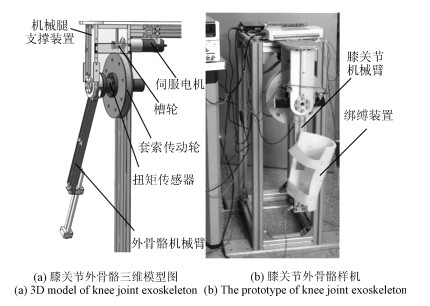
 下载:
下载:
